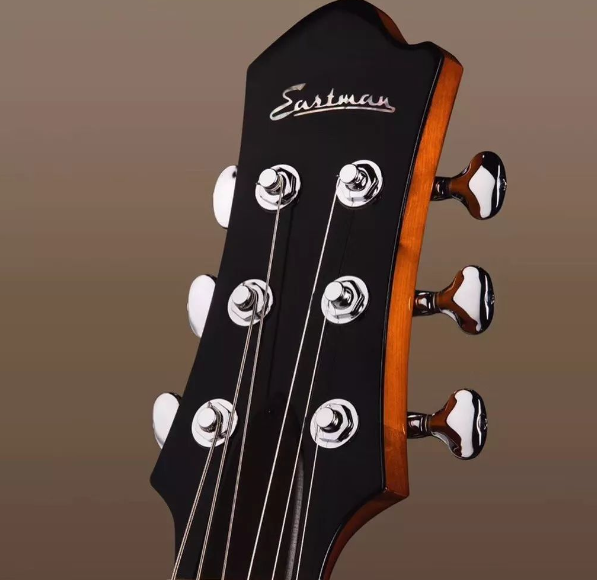Guitar string tuning pegs have many aliases: string axis, rotary tuning pegs, string alignment, head tuning pegs, etc., which refer to the parts on the head of the guitar used to fix the strings and tune.
In the early days, the selection range of guitar string tuning pegs was very small. Few companies produced metal string tuning pegs. Most of them were wooden string tuning pegs like violin or pipa. However, it was inconvenient to use them on folk guitar with metal wire.

The turnbuckles of violins are mostly made of hardwood
John Frederick Hintz was one of the earliest known string tuning pegs manufacturers, who introduced this revolutionary technology in 1766. However, the string tuning pegs made at that time could not wind too many string coils, and the workmanship of the gears was not very mature. Such shortcomings made the guitar strings easy to fall off, leading to sound loss. Only after the 19th century did more optimized designs slowly emerge.
Decorative string tuning pegs on early jazz guitars
But back to modern times, we have many dazzling choices: from the world-famous famous string tuning pegs brands Grover, Schaller, Waverly, Gotoh (the main choice of Eastman guitar) and so on, these high-quality string tuning pegs manufacturers have provided a variety of models and are constantly improving.
About gear ratio
When selecting the chord tuning pegs, you will see that the 18:1 or 1:18 parameters provided by the manufacturer are Gear Ratio. It refers to the number of times you need to twist the knob to complete a complete rotation of the gear when installing the strings. The lower the gear ratio, the fewer times the knob needs to be twisted, and vice versa.
1: 14. 1:18 are common gear ratio parameters, and even have specifications of 1:21 and 1:24
As the chord knob with high gear ratio has smaller increment when rotating, the rotation is smoother, so the adjustment amount can be controlled more finely. In other words, the 1:18 chord tuning pegs ratio will be better controlled than the 1:11 chord tuning pegs. Although the string knob with low gear ratio can roll strings quickly, it is relatively difficult to calibrate accurately. It may become too high or too low with a slight turn.
Style of string tuning pegs
The most common string tuning pegs styles are:
– Open string tuning pegs: that is, the gear is exposed outside, and it needs to be oiled regularly
– Closed string tuning pegs: the gear part is covered and sealed, which is less likely to escape dust
Closed or open string tuning pegs have nothing to do with quality. Many international manufacturers are still introducing the open string tuning pegs style, because it has a traditional mechanical retro feeling and is quite suitable for some guitar configurations.
The advantage of the closed rotary knob is that the gear is covered, the dust and dirt will not run in, the lubricating oil will not be lost, and it will be more convenient to use. It is a very common string knob.
– Locking string tuning pegs: prevent the guitar string from running
As the name implies, the lock type string knob is equipped with a locking device, which can really prevent the string from sliding, and users do not need to repeatedly wind many loops to stabilize the string. This kind of string tuning pegs is often used on electric guitars that often use string pushing or rocking seats. Recently, some wooden guitars also use this kind of string tuning pegs, which ensures the accuracy of tuning. However, the price of this kind of string tuning pegs is higher.
In addition to gear ratio and smoothness during rotation, good materials, workmanship and even appearance design are very important for a good tuning pegs. In order to allow users to better control, many string tuning pegs manufacturers will also pay more attention to the appearance. The ergonomic design makes each tuning more smooth and improves the feel and touch of the string tuning pegs.